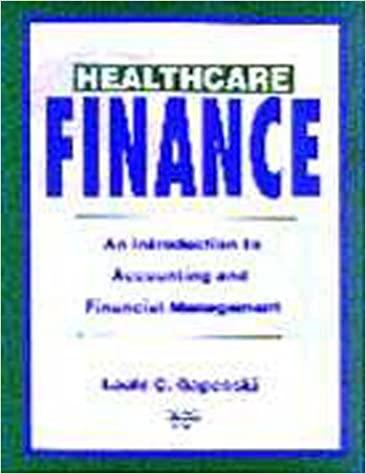Question
Capital Budgeting: Estimating Cash: Cash Flow Estimation and Risk Analysis: Real Options DCF analysis doesn't always lead to proper capital budgeting decisions because capital budgeting
Capital Budgeting: Estimating Cash: Cash Flow Estimation and Risk Analysis: Real Options
DCF analysis doesn't always lead to proper capital budgeting decisions because capital budgeting projects are not -Select-activepassiverealCorrect 1 of Item 1investments like stocks and bonds. Managers can often take positive actions after the investment has been made to alter a project's cash flows. These opportunities are real options that offer the right but not the obligation to take some future action. Types of real options include abandonment, investment timing, expansion, output flexibility, and input flexibility. The existence of options can -Select-decreaseincreaseneutralizeCorrect 2 of Item 1projects' expected profitability, -Select-decreaseincreaseneutralizeCorrect 3 of Item 1their calculated NPVs, and -Select-decreaseincreaseneutralizeCorrect 4 of Item 1their risk.
The abandonment option is the option to shut down a project if operating cash flows turn out to be lower than expected. To analyze the abandonment option you can draw a decision tree, which is a diagram that lays out different branches that are the result of different decisions made or the result of different economic situations. When analyzing real options you consider the project with and without the option. The option value is calculated as the difference between the expected NPVs with and without the relevant option. (If the value of the project without the option is negative and the NPV of the project with the option is positive, then the option value is simply the calculated NPV of the option.) It is the value that is not accounted for in a traditional NPV analysis and a positive option value expands the firm's opportunities.
Quantitative Problem: Sunshine Smoothies Company (SSC) manufactures and distributes smoothies. SSC is considering the development of a new line of high-protein energy smoothies. SSC's CFO has collected the following information regarding the proposed project, which is expected to last 3 years:
- The project can be operated at the company's Charleston plant, which is currently vacant.
- The project will require that the company spend $4 million today (t = 0) to purchase additional equipment. For tax purposes the equipment will be depreciated on a straight-line basis over 5 years. Thus, the firm's annual depreciation expense is $4,000,000/5 = $800,000. The company plans to use the equipment for all 3 years of the project. At t = 3 (which is the project's last year of operation), the equipment is expected to be sold for $1,200,000 before taxes.
- The project will require an increase in net operating working capital of $730,000 at t = 0. The cost of the working capital will be fully recovered at t = 3 (which is the project's last year of operation).
- Expected high-protein energy smoothie sales are as follows:
Year Sales 1 $2,200,000 2 7,750,000 3 3,500,000 - The project's annual operating costs (excluding depreciation) are expected to be 60% of sales.
- The company's tax rate is 40%.
- The company is extremely profitable; so if any losses are incurred from the high-protein energy smoothie project they can be used to partially offset taxes paid on the company's other projects. (That is, assume that if there are any tax credits related to this project they can be used in the year they occur.)
- The project has a WACC = 10.0%.
What is the project's expected NPV and IRR? Round your answers to 2 decimal places. Do not round your intermediate calculations.
| NPV | $ |
| IRR | % |
Should the firm accept the project? -Select-The firm should accept the project.The firm should not accept the project.Correct 7 of Item 1
SSC is considering another project: the introduction of a "weight loss" smoothie. The project would require a $3.1 million investment outlay today (t = 0). The after-tax cash flows would depend on whether the weight loss smoothie is well received by consumers. There is a 40% chance that demand will be good, in which case the project will produce after-tax cash flows of $1.9 million at the end of each of the next 3 years. There is a 60% chance that demand will be poor, in which case the after-tax cash flows will be $0.5 million for 3 years. The project is riskier than the firm's other projects, so it has a WACC of 11%. The firm will know if the project is successful after receiving the cash flows the first year, and after receiving the first year's cash flows it will have the option to abandon the project. If the firm decides to abandon the project the company will not receive any cash flows after t = 1, but it will be able to sell the assets related to the project for $2.25 million after taxes at t = 1. Assuming the company has an option to abandon the project, what is the expected NPV of the project today? Round your answer to 2 decimal places. Do not round your intermediate calculations. Use the values in "millions of dollars" to ascertain the answer. $ millions of dollars
Step by Step Solution
There are 3 Steps involved in it
Step: 1

Get Instant Access to Expert-Tailored Solutions
See step-by-step solutions with expert insights and AI powered tools for academic success
Step: 2

Step: 3

Ace Your Homework with AI
Get the answers you need in no time with our AI-driven, step-by-step assistance
Get Started


